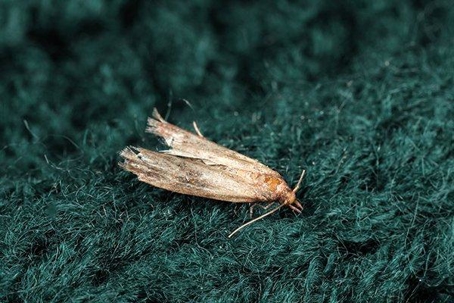The Trick To Keeping Clothes Moths Out Of Your Houston Home
Winter is the time for steaming cups of cocoa. We head to the closet for those wool socks and cardigans to wrap in warmth as the weather gets cooler. How disappointing to open your closet only to find your favorite sweater peppered in holes! You can bet the culprit is a clothes moth.
Houston Clothes Moths
Clothes moths are nocturnal and very small. If you're lucky enough to get a close look at one, these pests have tiny sand-colored fringed wings and can be smaller than your fingertip. But the adult moths you may startle in a dark closet or attic are not responsible for the holes in your sweater. Their larvae are eating your clothes and family heirlooms.
These fascinating insects don't eat once they reach adulthood. But they sure are busy. Clothes moths can lay up to 50 larvae, and when those larvae hatch, they wreak pandemonium inside your home.
The most common clothes moths are the casemaking clothes moth and the webbing clothes moth. Homeowners more frequently encounter the webbing clothes moth. They make their own protective webbing that takes on the color of the fabric they are eating. Casemaking clothes moths, which tend to be a more brownish color, also produce a case that they carry along with them as they feed. These cases take on the color of the fabric, thereby disguising them.
Clothes Moths Have An Appetite for Fashion
In order to survive, clothes moth larvae must eat keratin, a structural protein found in animal fiber. They will chow down on almost anything in your closet, including furs, silks, feathers, wools, cashmere, and even some synthetic materials. The creamy white larvae or caterpillars are so small that you can't see them with the naked eye. For this reason, they tend to go unnoticed, feasting on rugs, upholstery, blankets, clothes, and even taxidermy mounts.
When these items aren't easily accessible, clothes moth larvae are known to feed on lint in the air ducts, human and pet hair, and dust.
Guess what clothes moth larvae especially enjoy? Dirty clothing. Clothes moths gravitate to stained and soiled clothing because of the moisture. Stains like urine and sweat contain nutrients that the larvae can absorb.
Keeping Moths Out Of The Closet
While clothes moths aren't a threat to human health, they are a nuisance and can result in a lot of damage to your possessions. Moths hate movement and light. They thrive in the moist, warm environment inside your home. Modern Pest Control recommends the following seven tips for preventing a clothes moth invasion.
Keep areas well-lit inside your home.
Clean often by vacuuming, sweeping, and keeping areas clear of lint, hair, and dust.
Launder clothes before storing them.
Ventilate your hard to reach spaces like closets and attics.
Use a dehumidifier to eliminate excess moisture in the air.
Rotate your clothing and cloth fabric items in storage and carefully check sweaters and other wool items for holes and frays.
Seal your clothing in airtight containers when not frequently in use.
There's an old practice of using cedar boxes to store clothing to prevent moths. But over time, these cedar boxes lose the cedar oils that deter clothes moths; these boxes then become susceptible. It's best to focus on tightly sealed storage for your clothing and eliminating excess moisture instead. These measures have a higher success rate in preventing clothes moths from infesting your home.
For total moth elimination in your Houston home, contact the professionals at Modern Pest Control.

